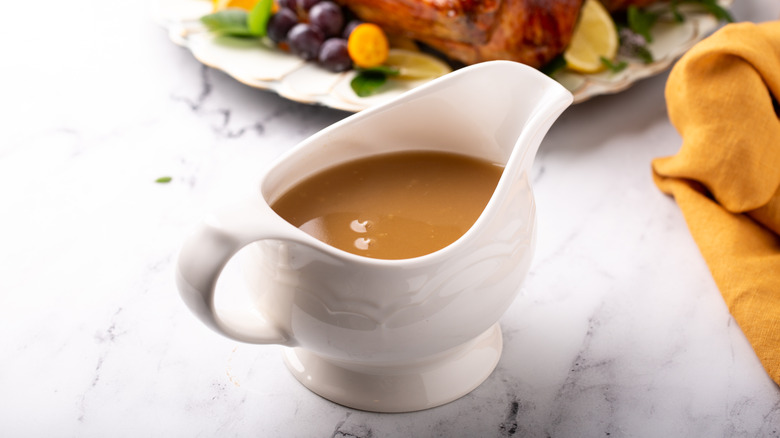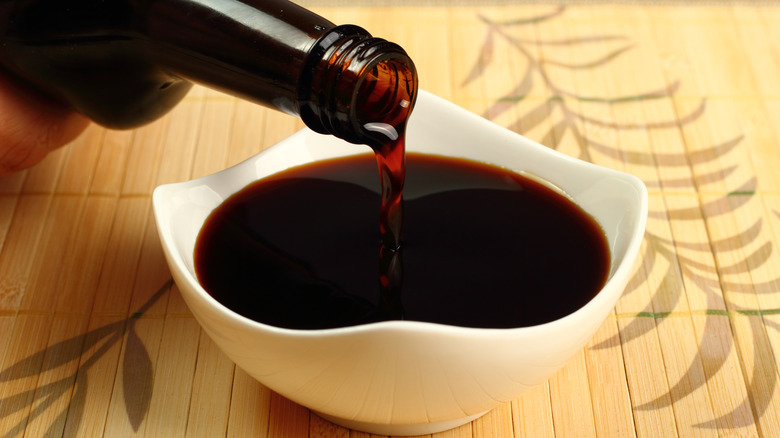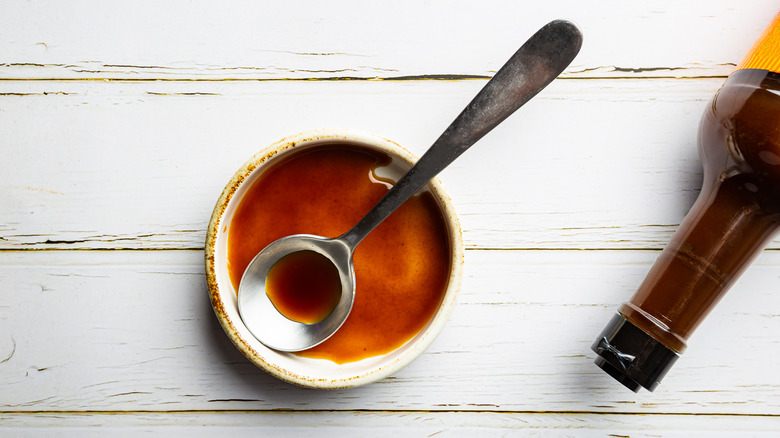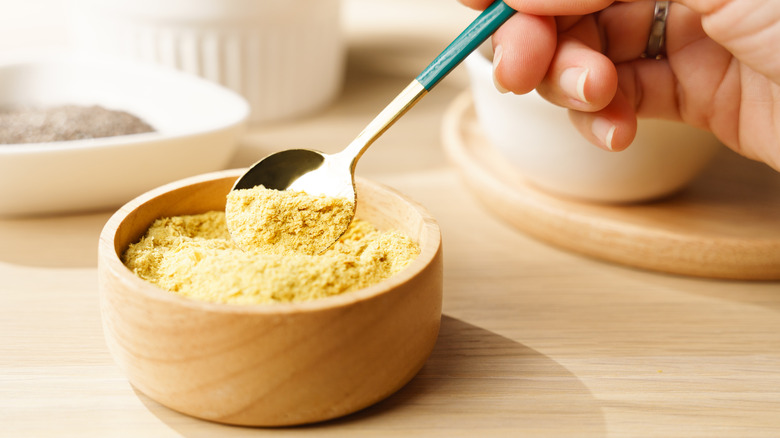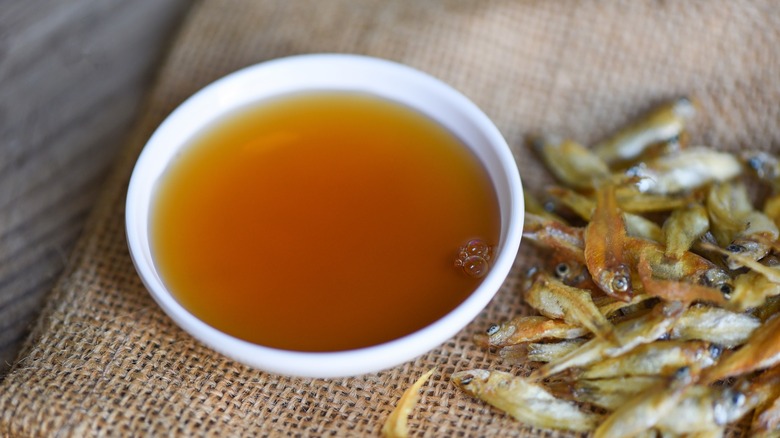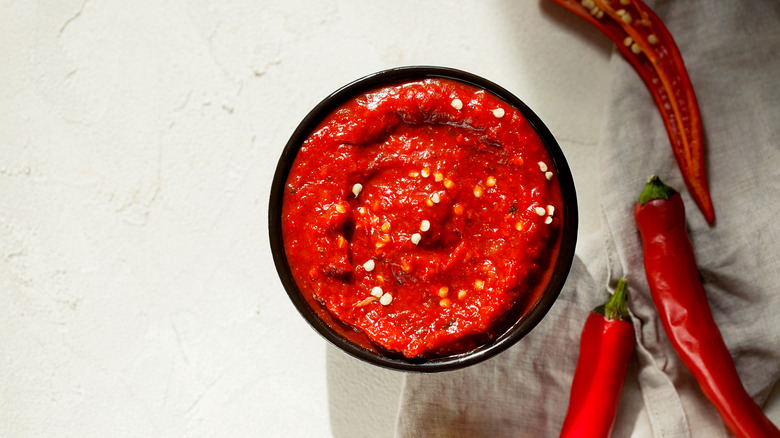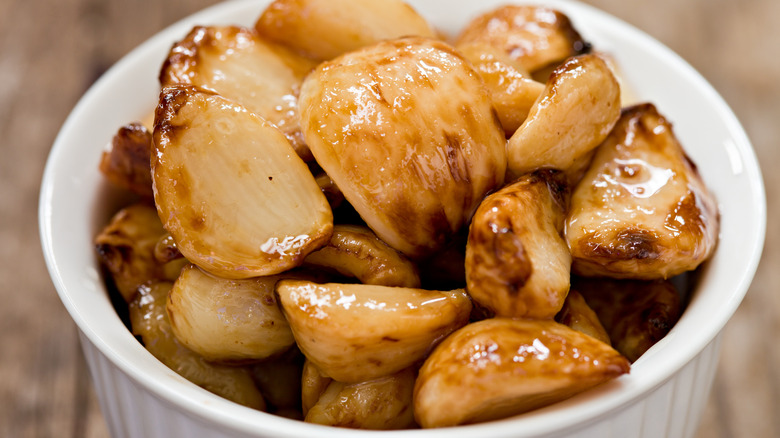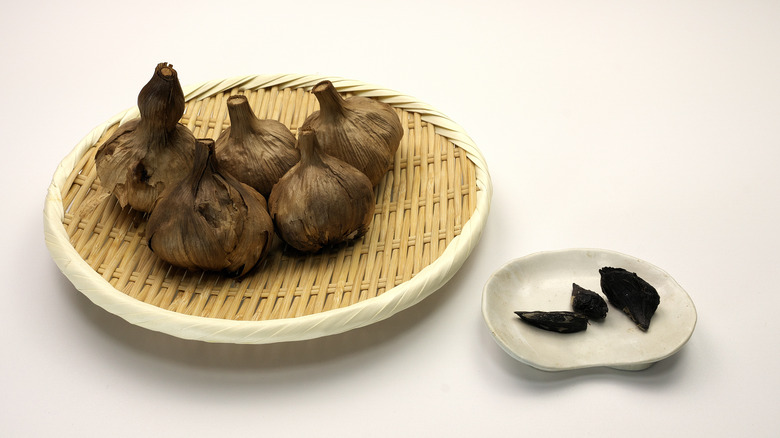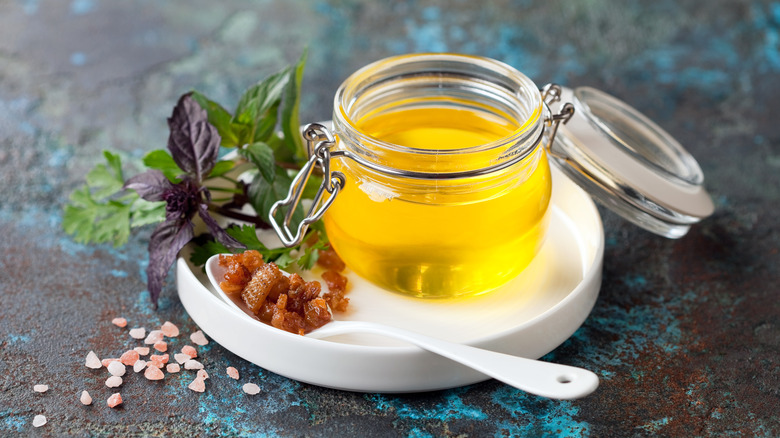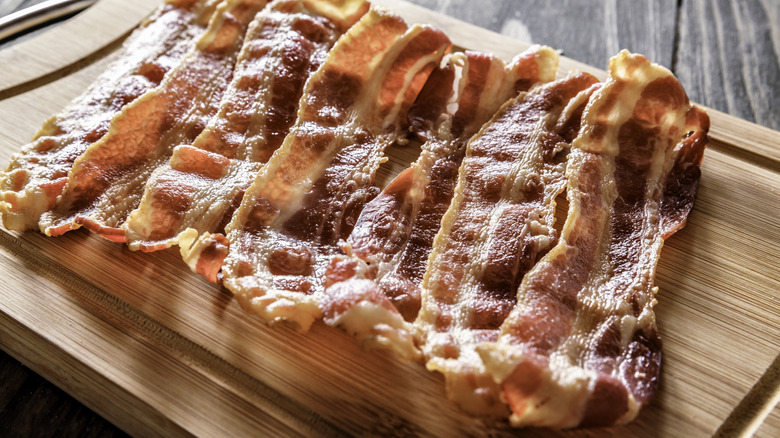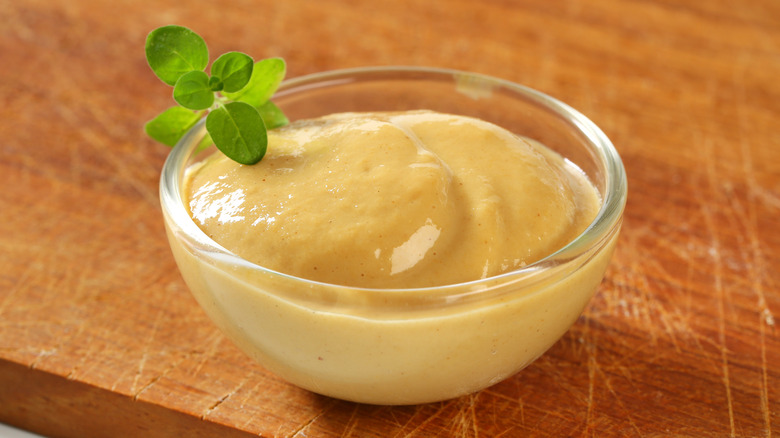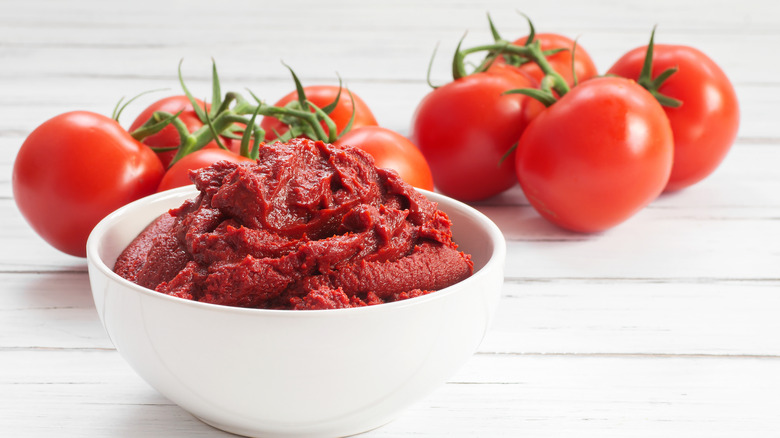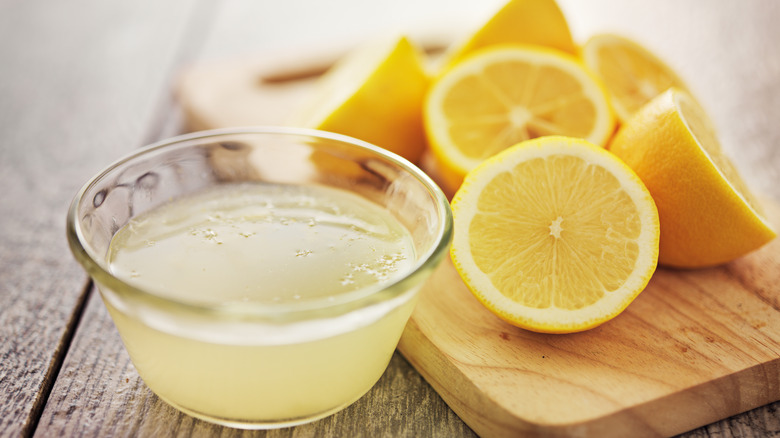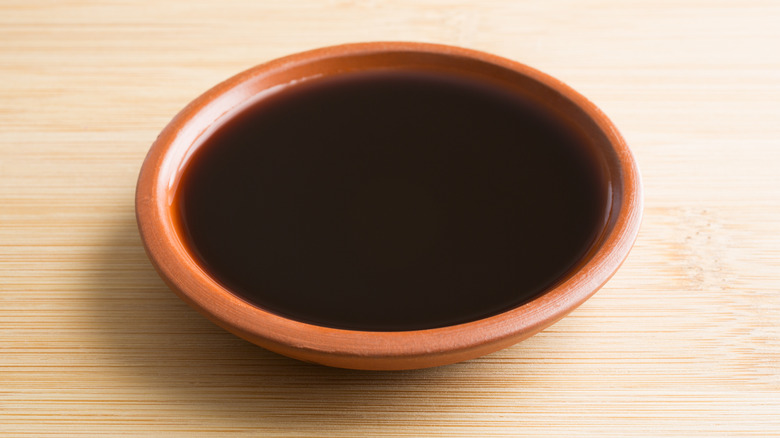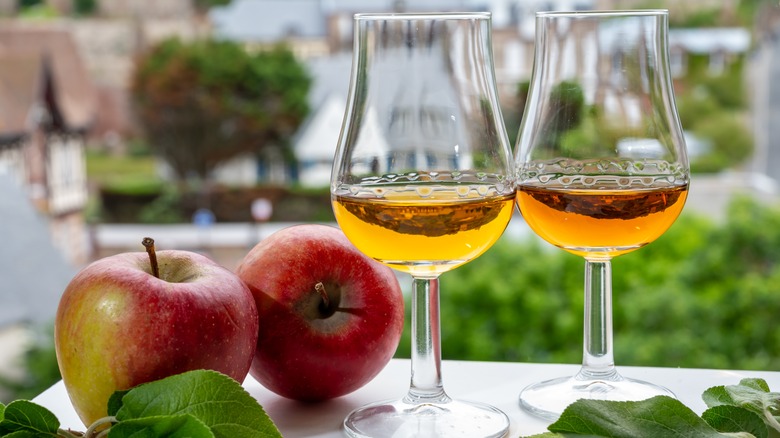14 Unexpected Ingredients That Will Upgrade Your Thanksgiving Gravy
It's not Thanksgiving without a boat of gravy on the table. Whether turkey-based or completely vegan, whether creamy and thick or light and bright, gravy is the unifying element of any Thanksgiving feast, binding together disparate dishes with potent savory flavors. It perfects potatoes, moistens meat, and boosts green beans. Swirling a dinner roll in gravy is one of the holiday's greatest pleasures. And yet, if you've been pouring the same type of gravy year after year, you may start to find yourself bored.
If that's the case, it's time for a gravy upgrade. Thankfully, putting some pizzazz in your gravy doesn't take much time or effort. The addition of a single ingredient can be all you need to turn your basic, stale gravy recipe into something that'll be the talk of the table. We've put together the best additions here that will put punch in every pour, and can be added to both homemade recipes and store-bought gravies. Upgrading your gravy is the easiest way to take your entire Thanksgiving dinner to another level of fabulous fall flavor.
1. Soy sauce
There's hardly a food out there that won't benefit from a hit of soy sauce. If you keep a bottle hidden away and only bring it out when you order Chinese food or sushi, you might want to reconsider and keep it close at hand. A few drops of soy sauce added to any sauce, including and perhaps especially Thanksgiving gravy, can be a game changer. When used judiciously, it acts like a dash of salt — you don't exactly taste it, but you'll know it's there in the way it amplifies all of the other flavors.
So what exactly is soy sauce's secret? It's fermented, which is a process that adds unique flavors and aromas, giving the sauce complexity and depth. It's also salty, so it acts as a seasoning agent for the other ingredients in the gravy. Because of its salt content, it should be added with a delicate hand or your gravy may become too briny. Add it a bit at a time and taste as you go, and you'll notice the gravy's flavors subtly intensify. Soy sauce is particularly useful in vegetarian gravies, as its rich umami flavor gives the feel of meatiness without actually using meat.
2. Worcestershire sauce
Similar to soy sauce, Worcestershire sauce is also a fermented condiment. Unlike soy sauce, which is a simpler concoction of soybeans, wheat, and salt, Worcestershire sauce is made from a symphony of varied ingredients including anchovies, vinegar, tamarind, molasses, onion, garlic, and spices. The addition of anchovies means it's not vegetarian-friendly, so keep that in mind if you're making a meat-free Thanksgiving spread. If you're a pescatarian or omnivore though, a touch of this highly concentrated sauce is a great way to bring a big boost of sweet and savory tang to your gravy.
A little goes a long way with this intensely flavored sauce, so it's best to add it cautiously while remembering to taste with each addition. The acidity from the vinegar works to balance and brighten the gravy's rich flavors, the molasses rounds things out with a touch of sweetness, and the fruity yet sour tamarind brings a bit of both. The anchovies won't make your gravy taste fishy — they're there for the umami factor. Worcestershire sauce really is the whole package when it comes to taste, and it'll boost the entire spectrum of flavors as it seasons your gravy.
3. Nutritional yeast
It may not look like much, but nutritional yeast — "nooch," as those in the know call it — is a fantastic flavor and texture booster when it comes to gravy. Nutritional yeast is made from yeast cells that have been heated, leaving them deactivated so they won't grow or multiply like active yeast would if you were, say, baking a loaf of bread. Available as flakes or powder, this substance has an appealing nutty, almost cheesy flavor, with that magical hit of umami that makes everything taste so good.
Nutritional yeast dissolves easily in liquid, so stirring some into your gravy is as easy as it gets. In addition to adding its dimensions of flavor, it's a great way to thicken your sauce, just as you would with flour or cornstarch. The major benefit it has over those other thickeners is its great taste. If you're making a dairy-free Thanksgiving gravy, consider using nooch to give it a rich, creamy texture.
4. Fish sauce
Yet another fabulous fermented product that can be used to spruce up boring Thanksgiving gravy is fish sauce. If you love the salty, umami part of Worcestershire sauce, but can do without all the other flavorings, fish sauce might just be the perfect seasoning for you. That's basically what it is: Anchovies or other seafood is fermented with salt, and the liquid released during the process becomes a concentrated, ultra-flavorful sauce that can be used to add depth to all kinds of dishes.
Of all of the fermented products on this list, fish sauce is the funkiest, so be aware of that element when you're adding it to your gravy. You might not want to go too overboard. Adding just the right amount, however, seasons your gravy in a unique way, adding a savory brininess to it while also amping up its umami. You may not need much or any additional salt if you're adding fish sauce, so make sure you're tasting your gravy before you sprinkle any in.
5. Chili paste
If you're looking for a way to spice up your Thanksgiving feast, giving your gravy some heat is a great way to do it. You can turn up the volume in many different ways, from adding diced fresh peppers into your gravy recipe to tossing in a few dashes of powdered cayenne, but to give your gravy a major upgrade, stir in a spoonful or two of chili paste. The paste form melds nicely into the gravy's texture, adding richness as well as heat.
There are a ton of different styles of chili paste out there, ranging in intensity and flavor profile. If you're not sure what kind you like, try a few side by side and see which one fits your palate. Gochujang is a fermented chili paste popular in Korean cuisine that pairs deep umami with spice. Harissa, used in North African cooking, can be beautifully aromatic thanks to additional spices and herbs. Then there's sambal, a tangy Indonesian chili paste made with vinegar or lime juice, and traditionally including shrimp paste. All of these pastes will bring their own fiery personality to your Thanksgiving gravy — just don't add so much that you've got a five-alarm fire on your hands.
6. Roasted garlic
Roasted garlic can make just about anything more delicious. Luscious, nutty, and sweet, without the intense pungency of raw garlic, roasted garlic cloves spread like butter and can be easily mashed into a paste and stirred into Thanksgiving gravy, adding a rich, warming quality to the sauce. The only obstacle to including this transcendent ingredient in all things is that it takes time to make. Additionally, if you're not careful, it can easily turn out burnt, leaving you with only dried-out, blackened husks.
That all changes on Thanksgiving. Since you've likely got the oven going all day, for the turkey or any number of sides or pies, there's no need to set aside an extra hour to get your garlic perfectly roasted and creamy. Even roasting multiple heads of garlic won't take up much room in a busy oven, so all you've got to do is remember to check them periodically so they don't overcook. Once the cloves are cooled and mashed, they're ready whenever you are, to add their rich, nutty goodness to the gravy.
7. Black garlic
Black garlic is just regular garlic that's been slowly aged in particular conditions until the cloves darken and take on new flavors. During the process, it loses its sharp pungency and becomes soft in texture, similar to roasted garlic. At the same time, it develops a unique concentrated and caramelized flavor, with a combination of sour, sweet, and savory notes. Think of a really good balsamic vinegar and you'll get an idea of the flavor. The cloves of black garlic can be mashed or pureed and easily mixed into Thanksgiving gravy, adding an extra dimension of depth and richness to the sauce.
You can find black garlic in stores sold as whole heads, individual cloves, pastes, and even in dried powder form. Adding this ingredient to your gravy not only enriches and intensifies its flavor, but also gives it a gorgeous dark color that looks stunning when poured over turkey and mashed potatoes.
8. Duck fat
To achieve a rich flavor and creamy texture, Thanksgiving gravy needs some kind of fat. Most recipes call for butter and/or pan drippings from the turkey, but there's another type of fat that you can use as an addition or substitute to take your gravy to the next level: Duck fat. This liquid gold brings an elegant silkiness to any sauce as well as a robust savory character that's more intense than turkey fat or butter alone.
Duck fat can be purchased online or in many gourmet specialty grocery stores. You can also make your own by cooking duck skin, rendering out its loads of fat and saving it aside. Duck fat can keep for a long time — up to a year if frozen, and half a year in the fridge, so it's well worth the effort if you cook a lot at home. Use it in the same way you'd use other fats in your recipe for an ultra-velvety and sophisticated gravy.
9. Bacon
The beauty of bacon is in its versatility. You can throw it in just about any dish for an instant flavor improvement, including your Thanksgiving gravy. Adding bacon is as easy as crumbling a slice of crispy cooked bacon and sprinkling it over the top of the sauce for a subtly tasty textural accent. Or you can pull out all of the stops and turn your gravy into an audacious bacon-delivery vessel.
Both bacon fat and bacon meat can be used to transform mellow turkey gravy into an intense smoky, savory, and hearty accompaniment to your holiday fare. Simply substitute or add bacon grease wherever your recipe calls for other fats. The bacon itself is a great way to add texture if you like your gravy to have a meaty bite to it, whether you add fried-up thick-cut chunks or smaller, finer bits. To add an even more intense punch of heat and flavor, try using a peppered bacon.
10. Mustard
There aren't a lot of ingredients that pack as much punch into one little dollop as mustard. When added to Thanksgiving gravy, it brings a combination of pungency, acidity, and heat that can instantly turn a drab sauce into one full of festive flavor. Mustard is a versatile accompaniment that plays well with all kinds of veggies, starches, and meats, so having it in your gravy will enhance virtually any dish that's gracing your overloaded Thanksgiving dinner plate.
Mustard comes in so many varieties it's impossible to go into them all, but each brings its own unique character to gravy. Classic yellow has a mild tartness, while Dijon mustard gives you much more crisp pungency. Add whole-grain mustard if you're looking to bring texture to your gravy as well as taste. Honey mustard rounds out savory gravy with its mild sweetness. Go for herbed mustard, like one with tarragon or herbes de Provence, to brighten the gravy up even more.
11. Tomato paste
When making soups, stews, and sauces like Thanksgiving gravy, there's one ingredient that should always be at hand: Tomato paste. While it's made from tomatoes, it brings so much more to food than tomato flavor. In fact, in many instances, the foods you add it to won't end up with a discernible tomato taste at all. One thing tomatoes bring to food is umami, that somewhat nebulous taste that we recognize as deep and savory. Tomato paste is so dense it's basically concentrated umami, which is why you only need a small amount to bring a big flavor boost to gravy.
Straight from the can or tube, tomato paste is already intensely flavored. Cook it down in a pan and you can concentrate it even further before adding the liquid gravy ingredients, giving you a deeply flavorful and intensely savory gravy with a touch of the tomatoes' acidity and sweetness as a backdrop. Tomato paste also adds a bit of thickness to the physical texture of the gravy, giving it a richer and lusher mouthfeel.
12. Lemon juice
If your Thanksgiving gravy tastes flat and one-dimensional, one thing it may be lacking is acidity. Acidity adds contrast to rich foods, and brightens flavors, adding a little zip and zing to whatever it touches. You can add acidity in many forms, but one that matches up particularly well with poultry is citrus. Think about classic dishes like lemon chicken or duck à l'orange — for whatever reason, these two types of foods just work well when paired together.
Any citrus can be used to improve gravy, but lemon brings just the right amount of pep and a clean, fresh taste. Adding lemon juice at the beginning of simmering time will imbue the gravy with a subtle background brightness. Stirring in freshly squeezed lemon juice at the end of cooking will leave you with a much more assertive flash of acidity. You can also finely grate citrus zest and add it to gravy to intensify the lemon flavor and aroma.
13. Liquid smoke
If you're a fan of barbecue, you've probably considered smoking a turkey for Thanksgiving. And who can blame you? There's nothing like the succulent satisfaction of a bird cooked low and slow over aromatic smoldering wood. Unfortunately, not everyone has the equipment or the prep and cook time that it takes to craft such a centerpiece for their holiday meal. For those with a hankering for smoked meat, there's an easy way to get that fix. A few drops of liquid smoke added to Thanksgiving gravy can bring a bit of the barbecue spirit to your meal.
Some true barbecue aficionados may turn their noses up at this shortcut ingredient, but it does the trick. Liquid smoke is intensely concentrated, so you'll want to add only a single drop at a time and taste diligently as you go. The smoky flavor adds a whole new dimension to turkey gravy, and can also be used to give the impression of meatiness to vegan or vegetarian gravy. If you don't have a bottle of liquid smoke on hand, smoked paprika is another ingredient that can be stirred in for a similar effect.
14. Calvados
Many Thanksgiving gravy recipes call for the addition of an alcoholic ingredient, typically wine or Cognac. These are used to deglaze the pan, helping to dislodge and incorporate the meaty bits and drippings from the turkey. In the case of vegetarian gravies, the wine or spirit is solely used to add flavor. When these complex liquids reduce over heat, the booziness cooks away, leaving you with a deeply flavorful, concentrated base that you can't get with just plain water or stock.
Now, Cognac and wine are fine options, but there's another choice that will give the perfect autumn flavors to your gravy — Calvados. It's a type of brandy from the Normandy area of France, where distilled from apples and pears, unlike Cognac and other traditional brandies which are made from grapes. There are different styles of Calvados that vary based on the subregion they're made in and the ratio of pears to apples allowed in the mix, and the flavor of Calvados evolves as it ages. Look for a young Calvados for a brighter, fruitier flavor, and a longer-aged one for a nuttier, deeper-tasting spirit. The best part about making Calvados gravy is that you have the rest of the bottle to pour into glasses and enjoy with your Thanksgiving dinner.
